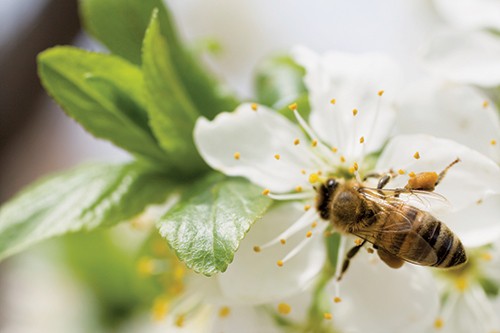
Around 2006, bees began disappearing from their hives at an accelerated rate, baffling apiarists and scientists. This phenomenon, called Colony Collapse Disorder, occurs when most honey bees abandon the hive, leaving behind the brood and honey, but no dead bee bodies.
Scientists have estimated that about a third of U.S. bee colonies have vanished since 2006, and this pollinator shortage could have a huge impact on our economy and produce supply. In the U.S., an estimated $15 billion in crops are pollinated every year by commercial honey bees. Some crops, such as almonds, depend on the bee population for survival. According to the USDA, the California almond industry alone needs 1.4 million colonies of honey bees to sustain itself. As beekeeping expenses rise, the cost may be passed to the consumer in the form of higher produce prices.
Scientists are scrambling to solve the Colony Collapse Disorder mystery, but pieces of the puzzle are missing. Cell phones and cell towers were once thought to be at fault, but this has been ruled out. Currently, scientists are looking at four potential causes: pathogens like Nosema, a gut fungi found in Colony Collapse Disorder hives; parasites, particularly varroa mites, which may transmit diseases; environmental stress caused by pollen scarcity and possible exposure to pesticides and contaminated water; and management stress put on bees by transporting them to multiple locations to pollinate crops.
In the meantime, apiarists are focusing on good nutrition for bees such as feeding them more protein when nectar is scarce and implementing best practices for hive maintenance.
